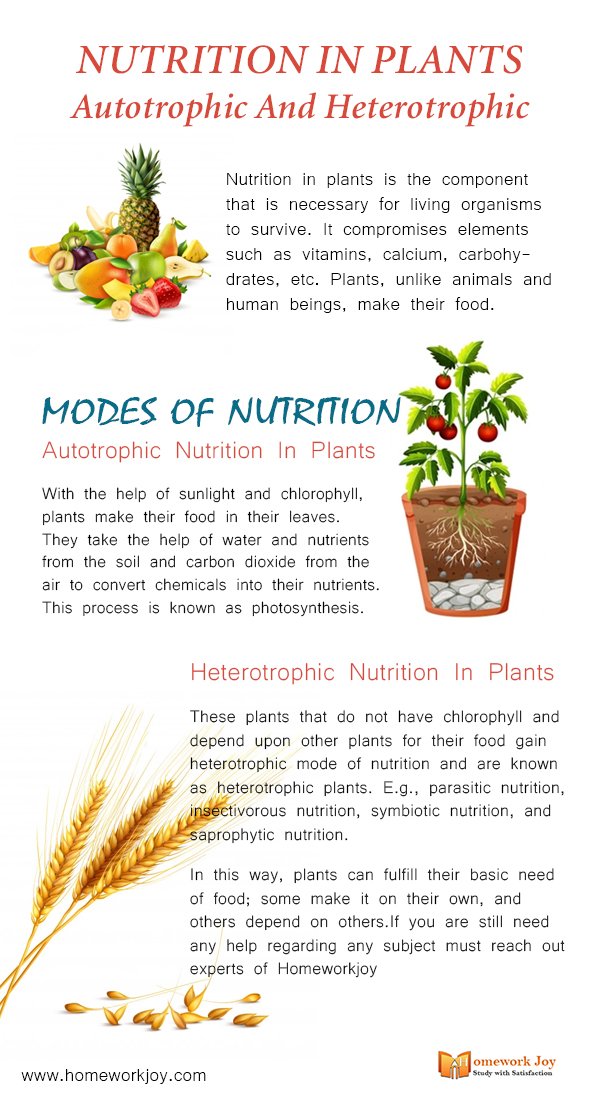Nutrition in plants is the component that is necessary for living organisms to survive. It compromises elements such as vitamins, calcium, carbohydrates, etc. Plants, unlike animals and human beings, make their food.
Modes Of Nutrition
There are two modes by which plants produce their food:
- Autotrophic Nutrition In Plants.
- Heterotrophic nutrition in plants.
Autotrophic Nutrition In Plants
With the help of sunlight and chlorophyll, plants make their food in their leaves. They take the help of water and nutrients from the soil and carbon dioxide from the air to convert chemicals into their nutrients. This process is known as photosynthesis.
Plants convert light energy into chemical energy and store it as food.
The roots from the soil absorb water, minerals, and salts, and the stem transfers them up to the leaves; the leaves have microscopic openings called stomata through which they take in the carbon dioxide from the air. The chloroplast in the leaves helps convert water and carbon dioxide into food, and oxygen is given out in this process. Photosynthesis also takes place in stems as they contain chlorophyll.
Heterotrophic Nutrition In Plants
These plants that do not have chlorophyll and depend upon other plants for their food gain heterotrophic mode of nutrition and are known as heterotrophic plants. E.g., parasitic nutrition, insectivorous nutrition, symbiotic nutrition, and saprophytic nutrition.
Insectivorous Nutrition
Plants that trap and feed on insects are carnivorous or heterotrophic.
For, e.g., Pitcher plant, Venus flytrap.
Parasitic Nutrition
The parasitic mode of nutrition is where an organism (parasite) lives inside the body of another type of organism (host) or on the body’s surface. The parasite obtains nutrition directly from the host’s body and, in turn, harms the host. This type of nutrition is called Parasitic Nutrition.
For, e.g., Cuscuta and Cassytha.
Saprophytic Nutrition
The saprophytic plants gain nutrition from dead and decaying plants and animals. They secret digestive juices and absorb nutrients with the help of dissolving dead and decaying, for, e.g., mushrooms, molds.
Symbiotic Nutrition
When two different plants belong to two different categories and show a close association, they are symbiotic. Thus, both the plants get benefitted from each other. For, e.g., the association of trees and fungi.
In this way, plants can fulfill their basic need of food; some make it on their own, and others depend on others. If you are still need any help regarding any subject must reach out experts of Homework Joy.
